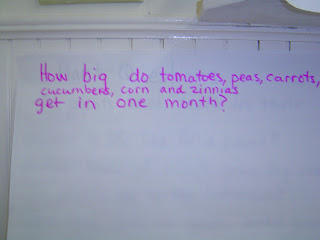The plants have begun to sprout! Well, they actually began to sprout a week ago, but we have been very bad scientists! Today we decided to get back on track and we began to collect data. We brought out the plants from each station and went from plant group to plant group to make observations. The students drew pictures of what they saw and then they shared their observations as a group.
Here are the observations so far! The students also began to think about why some plants have come up while others haven't and why the plants that have come up look different (shorter, taller, sturdier, darker green, lighter green, etc.) depending on where they're growing.
















































